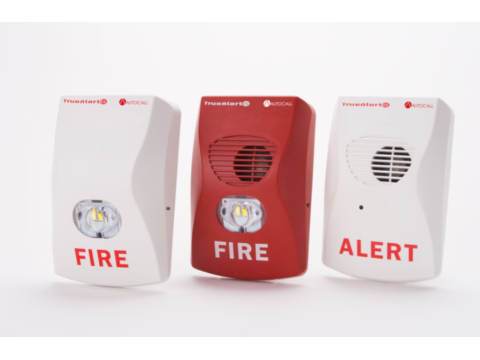FIRE ALARM EQUIPMENT: THE ESSENTIALS
DETECTORS
CONTROL PANELS
NOTIFICATION SYSTEMS
Fire alarm equipment is vital for detecting fires, alerting occupants, and controlling safety systems. In the USA, compliance with fire safety regulations is essential, and high-quality systems, like those available at safsale.com, are built to meet stringent standards.
Fire alarm systems include:
- Detectors: Smoke, heat, and flame sensors.
- Control Panels: Process signals and manage alerts.
- Notification Devices: Audible and visual alarms.
- Power Supplies: Ensure uninterrupted operation.
The efficiency of a fire alarm system depends on its components and setup. For instance, smoke detectors are ideal for detecting rising smoke levels but may miss smoldering fires without visible flames. Selecting the right equipment based on specific fire risks is crucial.
FIRE DETECTORS
Fire detectors come in three main types:
- Smoke Detectors: Spot rising smoke levels.
- Heat Detectors: Detect temperature spikes.
- Flame Detectors: Sense visible flames.
These detectors vary in design, operation, and connectivity. Here’s what you need to know:
Detection Zones:
- Point Detectors: Cover a specific area.
- Line Detectors: Monitor along a straight path.
- Volume Detectors: For larger, open spaces.
Connectivity:
- Wired Systems: Reliable and cost-effective.
- Wireless Systems: Easier to install but pricier.
At safsale.com, we offer detectors tailored to American building standards, ensuring both effectiveness and compliance.
Manual Call Points:
Manual detectors allow people to trigger alarms directly by pressing a button or pulling a lever. These are mandatory in all U.S. commercial and residential buildings.
CONTROL PANELS AND MANAGEMENT DEVICES
Control panels are the heart of any fire alarm system. They receive data from detectors, process it, and manage outputs like alarms, sprinklers, and ventilation.
Key Features:
- Informational Accuracy: Displays alerts for events like "Normal," "Fault," or "Fire."
- Capacity: Determines how many loops or sensors can be connected.
Control panels in the USA must ensure uninterrupted operation, even during power outages. They are required to run for 24 hours on standby and at least 3 hours in alarm mode using backup power.
WIRED VS. WIRELESS SYSTEMS
When choosing between wired and wireless systems, consider:
- Wired Systems: Cost-effective but more labor-intensive to install.
- Wireless Systems: Higher initial cost but easier and faster setup.
Wired systems can be threshold-based (basic, detects fire but not specific detectors) or addressable (provides precise detector location and diagnostics). Wireless systems are always addressable, offering detailed monitoring.
COMPLIANCE AND CERTIFICATION
All fire alarm equipment must be certified and approved by fire safety authorities in the USA. At safsale.com, we ensure every product meets the highest regulatory standards, providing both reliability and peace of mind.
If you’re looking to upgrade or install a fire alarm system in your home or business, visit safsale.com for expert guidance and top-quality equipment tailored to American standards.

